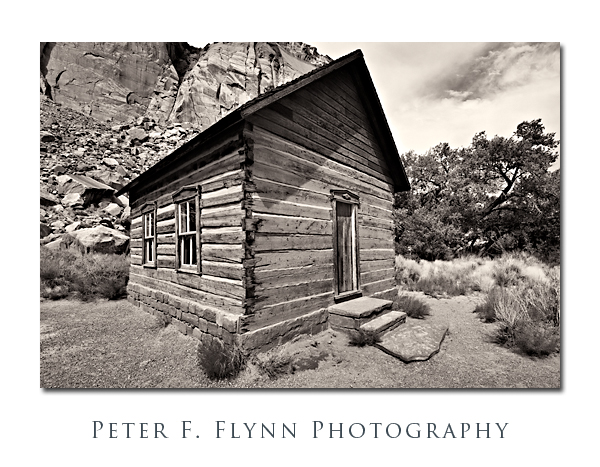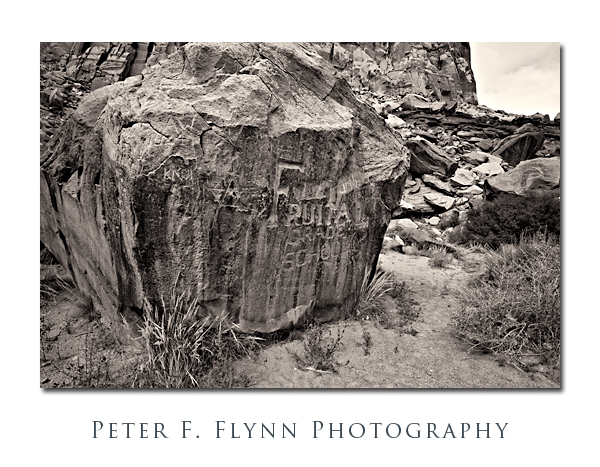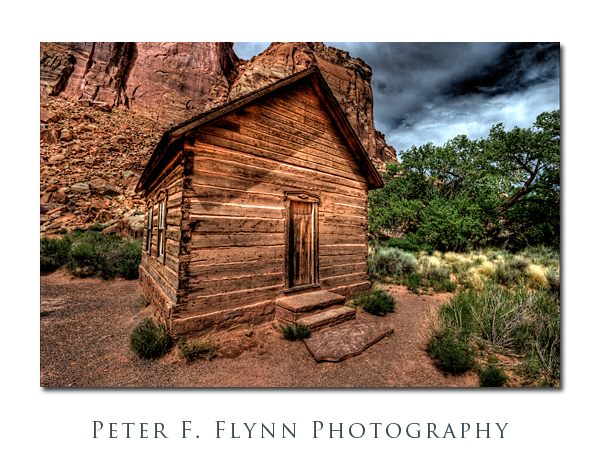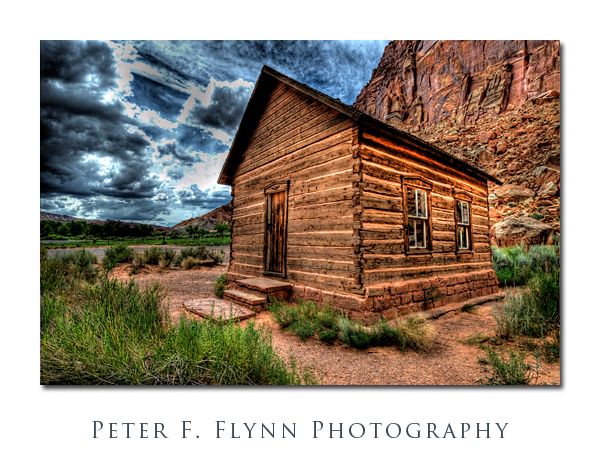Capitol Reef National Park. Although it is the equal of any of the scenic wonders of the Grand Staircase, it is generally far less crowded than Zion or Bryce Canyon. This is due to the simple fact that it lies a little further on down the road, and is therefore left off many a family’s itinerary. The area is not recorded on official maps before 1872, and the road from Richfield to nearby Torrey was not paved until 1940.
In spite of its remote location, by 1880 Mormon settlers had established a farming and ranching outpost that would eventually acquire the name Fruita. An apt name, for fruit orchards planted by the Mormon pioneers are still thriving here. Capitol Reef was established in 1937 as a National Monument (NP in 1971), and by the late 1960s the Park Service had acquired most of the privately held property.
One of the more interesting remaining pioneer buildings is the one-room Fruita Schoohouse shown above. The structure is listed on the National Registry of Historic Places, and the specific entry may be found here.
The image of the schoolhouse was recorded at about 16:00 MDT on July 22, 2010, using the Nikon D3s and the AF-S NIKKOR 16-35mm f/4G ED VR lens at 16mm. Exposure was f/16 and 1/320, ISO 800. Image converted to BW using Nik Silver Efex.
The boulder inscribed with the name of the location lies just behind the schoolhouse (north). In addition to the engraved ‘Fruita Grade School’, there are a plethora of other minor inscriptions. Same exposure and processing parameters as for the schoolhouse image.
Images like the schoolhouse have become prime candidates for what has become known as one-shot HDR processing. Using this method, single RAW files are converted into HDR images as shown below. Images converted to HDR using Photomatix Pro 3.
The results are almost always processed using Details Enhancer mode (in Photomatix parlance) to produce a characteristically illustrated or ‘painterly’ representation of the image. I don’t know. Although I reject all impressionistic representations on the basis of principle, that is not really the issue here. There is something simultaneously intriguing and unsettling about this representation. Frankly, it is certainly more compelling than the BW representation in many instances. Anyway, if you like this sort of thing, I invite you to enjoy the effort. At any rate, I cannot resist the opportunity of exploring new methods, so you’ll see more of this stuff.
Copyright 2010 Peter F. Flynn. No usage permitted without prior written consent. All rights reserved.



